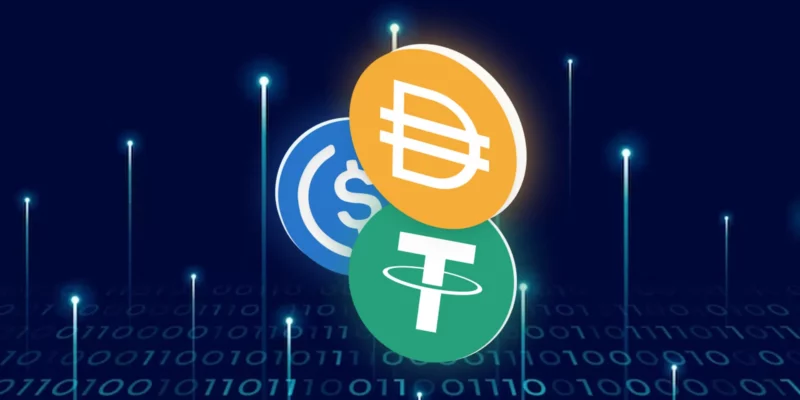- Algorithmic stablecoins are designed to ensure a coin’s value and stability across the market’s volatility.
- Meanwhile, this coin too faces market shifts with varying supply and demand.
Algorithmic stablecoins provide enhanced stability compared to other traditional cryptos in the blockchain system. Stablecoins, which are not backed by any financial assets, are assumed to be more fragile as their stability totally depends on the investor’s confidence. This type of limitation is currently highlighted because of the TerraUSD collapse. Despite so much volatility, stablecoins are still preferred because they are more efficient, globally accessible, low-cost, fast, and secure.
What are Algorithmic Stablecoins?
Algorithmic Stablecoins are mainly based on a set of codes that are used to execute a process. In the blockchain’s ecosystem, an algorithm determines a set of code over the blockchain that’s encoded in the form of smart contracts. These coins are based on two main components, the stablecoin and the crypto asset that backs it. Smart contracts bridge the gap between these two elements.
These coins are designed to maintain stability without any external body as they are completely uncollateralized. The algorithmic stablecoins are developed in such a way that they maintain their pegged value with the help of contract codes. These codes help regulate supply if the value rises or falls. When the value increases, the algorithm works to increase supply and when the value goes down, it buys them off.
How Does Algorithmic Stablecoin Work?
This coin works under the two-coin system, where one coin is designed to absorb the volatility of the market and the other one is used to keep the value pegged. This method works on share tokens, which can be traded over decentralized exchanges (DEXs). Initially, TerraUSD solely stuck to its two-coin system, but lately, Bitcoin has been incorporated as its backbone to keep up with the mathematical approach of stablecoins.
Algorithmic stablecoin’s development team incorporates several mechanisms to maintain stability. These mechanisms are written in protocol or smart contract format. Because of blockchain’s transparency, these protocols are publicly available so that anyone can view them. They are designed in such a way to inherit uncollateralized pegged values like $1.
Advantages of Stablecoin based on Algorithm
This type of cryptocurrency determines the true meaning of decentralization. Its code defines the rules that manipulate the overlaying financial system without any third-party or regulatory body needed to keep an eye on an individual’s transactions. Furthermore, no solid asset lies underneath the system of algorithmic stablecoins, and due to that, user error risk is negligible.
The concept of seigniorage in crypto’s ecosystem was redefined by Algorithmic stablecoins. This helps in the assessment of Profit and Loss associated with the production of a new currency in the world of decentralization.
Cons of Algorithmic Stablecoin
Algorithmic stablecoins are based on a coded architecture. These digital assets, which are uncollateralized, use algorithms or a set of codes to functionalize financial engineering and regulate market incentives to peg a reference asset’s price. These are designed to be pegged, but sometimes they become unstable and more prone to de-pegging risk.
Additionally, there are three issues with this type of stablecoin. Initially, the stable cryptocurrencies associated with it needed a particular demand to work in the right way. The system faces collapse when the demand value goes down to a certain level. Secondly, these coins are volatile due to the self-motivated system. Users and investors who are willing to take advantage of algorithms in the case of TerraUSD backed off and sold the underlying stablecoins, causing an ambiguous price drop.
Conclusion
Algorithmic stablecoins are considered the best use of decentralization, but everything comes with its own pros and cons. Because it is associated with an undersea stablecoin, it becomes vulnerable in cases of devaluation and collateralization. Hence, before investing in a currency that’s more prone to risk, users must do their own research and keep up with the volatile conditions of the crypto market to avoid losses.


Comments